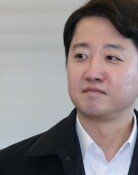School libraries and after-school programs are the best
School libraries and after-school programs are the best
Posted August. 12, 2023 07:58,
Updated August. 12, 2023 07:58
For parents, elementary school vacations often spell increased anxiety and stress concerning childcare. This is particularly true for working parents who desperately need a place to entrust their children during the mornings.
Last month, as I was navigating through my child's holiday schedule, a timely notification from the school arrived. It stated that for the initial two weeks post-vacation, an English classroom headed by a native teacher would be in session from 9 am to noon. Intriguingly, the entire course fee, equivalent to what one might pay for a day's special session in a private academy, was 50,000 won. Without hesitation, I signed up. The program, revolving around J.K. Rowling's "Harry Potter," turned out to be a gratifying experience for both my child and me.
We turned to after-school special lectures and our school library to fill the childcare void for the remainder of the vacation. While after-school programs usually run in the afternoon during the regular term, they conveniently shift to the morning during vacations. The variety is impressive: from AI and coding to board games, chess, cooking, Go, jump rope, flute lessons, magic, and classical guitar. On days when no after-school programs were scheduled, the ever-open school library was our haven.
Another noteworthy initiative is the childcare classroom. These designated spaces, staffed by dedicated childcare educators appointed by local educational offices or the school itself, cater to children post their regular class hours. While some schools might not operate these during holidays, many do – with many even offering lunch facilities. As a friend with a child in early-grade elementary school aptly put it, "For a working mother, the childcare classroom is a beacon of light."
When parents fail to get help from public education, they often find themselves reluctantly relying on pricier private educational institutes or camps. In some cases, the costs can surge to two or three times that of public childcare services.
Data from the Ministry of Education reveals a worrisome trend: childcare classrooms rose from 11,980 in 2017 to 14,970 the following year, but the waiting list swelled from 9,225 to 15,106. This indicates that demand far outpaces supply despite the increase in childcare spaces.
Earlier this year, the Ministry unveiled a diverse range of childcare services, including Morning Care, Part-time care, and short-time care, as part of their 'Always Spring School' initiative. This pilot program, targeting around 200 elementary schools, plans a nationwide rollout by 2025. The objective is clear: reduce teachers' burden by centralizing operations from the education office and providing specialized staff.
In conclusion, partnering with local communities to bolster high-quality public education childcare is arguably one of the most reassuring policies for parents. As advocates of this initiative, we fervently hope that the 'Always Spring School' policy unfurls seamlessly, ensuring a broader spectrum of students benefit from top-notch childcare services.



![[속보]신한카드 가맹점 대표 19만명 개인정보 유출](https://dimg.donga.com/c/138/175/90/1/wps/NEWS/IMAGE/2025/12/23/133022917.1.jpg)



